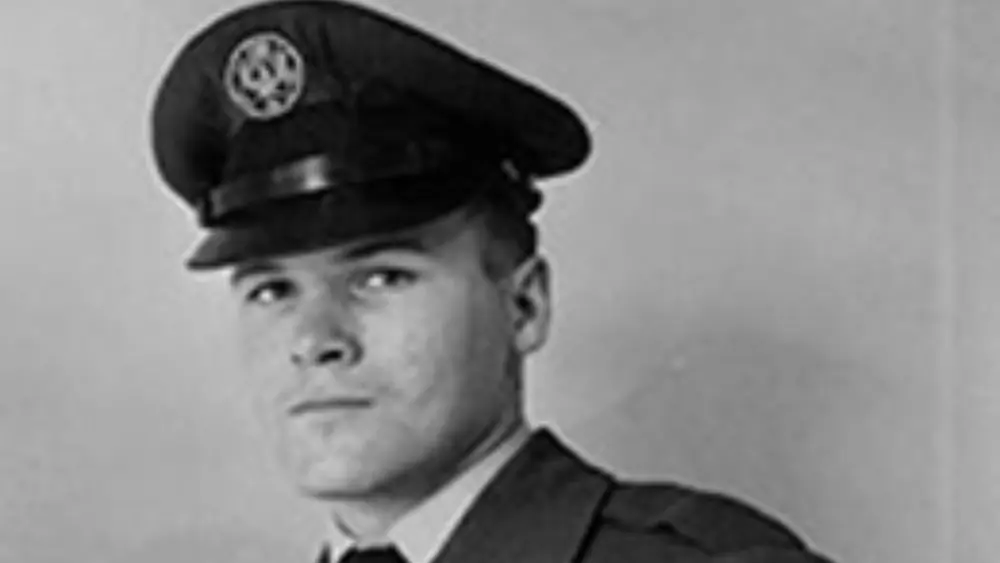Barry Sadler, an American soldier, singer, composer, and pulp-fiction novelist, was born in Carlsbad, New Mexico, on November 1, 1940. He passed away in Murfreesboro, Tennessee, on November 5, 1989. He is best known for his number-one hit song, “The Ballad of the Green Berets.”
Three years before his father’s passing, in 1945, Sadler’s parents had divorced. The mother of the young Sadler traveled across the country. Sadler lived throughout the Southwest until settling in Leadville, Colorado. He attended public education before quitting after the 10th grade. Then, Sadler migrated to America. In June 1958, he enlisted in the Air Force and served four years, including one year in Japan. In June 1962, he earned his GED and studied martial arts before receiving an honorable discharge.
Sadler’s Military Journey
Sadler joined the U.S. military after leaving due to a lack of employment opportunities. August 1962, Army. After finishing his airborne training, he joined the Special Forces and decided to join as a doctor. He received his training at the Brooke Army Medical Center at Fort Sam Houston in Texas.
The Advanced Medical Training School at Fort Bragg, North Carolina, and the Army Hospital at Fort Jackson, South Carolina, finished their programs in December 1963. He had wed Lavona Edelman, a nurse in the Women’s Army Corps (WAC), on July 18, 1963. For most of his service, Sadler worked as a medic with the 5th Special Forces Group’s Detachment A-216 at Camp Hardy in Plei Do Lim in the Central Highlands of South Vietnam.
The Extraordinary Journey of Barry Sadler
Barry Sadler’s journey had already been nothing short of extraordinary. From earning his GED while stationed in Japan to volunteering for Airborne and Special Forces in the US Army, he had become a highly skilled medic. But it was during a fateful combat patrol in the Central Highlands of Vietnam that he encountered the influential punji stick.
Despite sustaining a knee injury from the wickedly concealed trap, Sadler’s determination and resilience propelled him forward. With nothing more than a cotton swab and an adhesive bandage, he treated himself on the spot. He refused to let his injury hinder the mission’s completion. Unfortunately, the knee injury worsened. So, the authorities had no choice but to evacuate Sadler for proper medical treatment.

Skillful Procedure and Sadler’s Musical Triumph
Surgeons at Clark Air Force Base Hospital in the Philippines skillfully performed a surgical procedure to drain the infection. This was followed by a course of penicillin treatment. Eventually, Sadler made a full recovery and returned to Fort Bragg, where he continued his unwavering service.
While Sadler’s bravery earned him a Purple Heart, it was his incredible talent as a musician that brought him nationwide recognition. His iconic song, “The Ballad of the Green Berets,” soared to the top of the charts. It sold over 9 million copies and held the No. 1 spot for an impressive five weeks. The 1968 movie “The Green Berets,” starring the legendary John Wayne, was inspired by Robin Moore’s novel. It featured Sadler’s powerful ballad as the title song.
Barry Sadler: A Tragic Legacy and Lasting Impact
But Sadler’s story takes a tragic turn. Despite his success and accolades, he faced numerous challenges and threats. Rumors swirled about his alleged involvement in training Nicaraguan rebels. Tragically, he lost his life in a senseless act of violence. While sitting in a taxi, someone shot him in the head. Authorities declared it an attempted robbery, but they have never held anyone accountable.
Barry Sadler’s legacy, however, continues to resonate through his music and his writings. Known for his daring and adventurous spirit, he authored over 20 books on mercenary adventures. Despite the hardships he faced, Sadler’s dedication to helping others never wavered. As his powerful lyrics proclaim, he ultimately made the ultimate sacrifice for those oppressed, leaving behind a lasting impact on the world.










